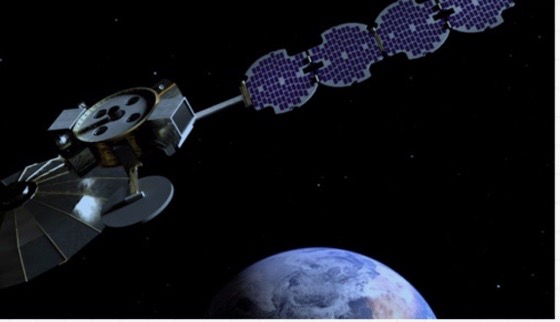
CAPITOL HILL: The Air Force and other services, after decades during which America often built a highly capable military satellite but didn’t have the ground equipment to use it, are trying to claw back years and dollars of often wasted effort by holding joint experiments to test satellites and ground equipment at the same time.
“A lot of the things we are doing right now is to better synchronize the ground layer with the space layer,” Col. Russell Teehan, the Air Force’s Portfolio Architect of the Air Force Space and Missile Systems Center told me after a Mitchell institute breakfast. He said the approach today is: “don’t do a space demo; do an integrated ground and space demo.”
What’s the problem been? Here’s how the Government Accountability Office put it in 2009 (and it’s still a problem):
“Satellites, ground control systems, and user terminals in most of DOD’s major space system acquisitions are not optimally aligned, leading to underutilized satellites and limited capability provided to the warfighter. Of the eight major space system acquisitions we studied, three systems anticipated that their satellites will be launched well before their associated ground control systems are fully capable of operating on-orbit capabilities. Furthermore, for five of the eight major space systems GAO reviewed, user terminals were to become operational after their associated satellites reach initial capability — in some cases, years after.”
A key effort to correct this is the upcoming Navigation Technology Satellite 3, an experimental Position, Navigation and Timing bird expected to launch in 2022.
The Air Force Research Laboratory and the Space and Missile Systems Center picked Harris to build the bird on Dec. 20, following a wholesale restructuring of the program.
Braxton Technologies, of Colorado Springs, was picked in June 2017 to build ground stations for NTS-3. This will not only test both the satellite and the ground stations at the same time, but help move toward the larger goal for this pair of systems: to test a new form of GPS that can be sustained in the event of jamming and other attacks. A story by Military & Aerospace Electronics says Braxton “will look into different ways to reconstitute the ground control segment in the event of an attack; experiment with automated and lights-out operations; demonstrate space vehicle command and control through commercial ground antennas; show compatibility with the Enterprise Ground System (EGS) standards and the Joint Space Operations Center (JSpOC) Mission System (JMS); and investigate modern processes to manage cyber risks.”
When I asked Teehan about the disconnect between satellites and ground stations at the Mitchell Institute event on Friday, he said he goes into every meeting with this in mind: “Don’t bring any piece of that system to me before it’s ready,” he said, noting that he and his colleagues at the Air Force’s Space and Missile Systems Center “stay very tight with the user base, the Army, the Navy. It’s incumbent upon us to make sure everyone knows what we’re doing, and they know what we’re doing, so when we deploy, it’s as a capability, not as a thing.”
During out chat, Teehan repeatedly mentioned NTS-3 as a key test of this approach. The Air Force is also doing its best once again to come up with standard satellite buses and those good ole “open architectures” to speed development and allow for faster upgrades. On its own, NTS-3 is likely to be really important to the future of the GPS constellation, because it’s the first experimental PNT bird to fly since the 1970s.
NTS-1 was developed by the Naval Research Laboratory (NRL) and launched in 1974 with two experimental technologies that helped improve the precision of GPS. NTS-2 launched in 1977. According to the Air Force, NTS-3 is the first “major DoD SatNav developmental program for experimentation since then.”
The Air Force Research Lab says NTS-3 program “will enable experimentation with multiple technologies and development of new concepts of operations. Technologies matured and knowledge gained from NTS-3 are expected to transition to future generations of GPS and potential augmentations to national PNT capabilities.”
And they should have a ground station to control the bird and collect data when the bird goes up, so it won’t just be spinning around with too little to do.
Russia vetos US-Japan resolution against nukes in space, ‘unprecedented escalation’ in UN fight
“Although Russia would not be expected to vote for a resolution aimed at its own conduct, its response that it is ‘against’ putting nuclear weapons in space is just vague enough to not quite be reassuring,” said Jessica West of Canada’s Project Ploughshares.


























